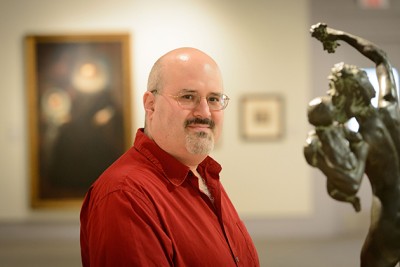
Creative people don’t just become best-selling novelists, Tony Award-winning composers, or world-renowned painters. Some become inspiring leaders, innovative entrepreneurs, and students’ favorite teachers.
Neag professor of educational psychology Dr. James C. Kaufman is an internationally recognized expert on how each individual’s creativity can be tapped in a multitude of settings. One of his primary focuses is on breaking down the preconception that creativity belongs only in the arts.
“Creative people tend to be happier, funnier, sexier, and more successful, and use their creativity to cope with stress and even heal themselves after a trauma,” says Kaufman, who last fall left California State University to join the Neag School of Education’s Department of Educational Psychology as part of UConn’s faculty hiring initiative.
Prior to his move to Storrs, Kaufman spent 11 years at California State’s San Bernardino campus, serving as founding director of its Learning Research Institute, and earning tenure within the Department of Psychology. He is a well known and much sought-after expert in all areas of creativity, including its assessment, fairness, and link to mental health.
Despite his ties to California, Kaufman says the opportunity to work with fellow creativity scholars and Neag professors Jonathan Plucker in the Department of Educational Leadership and Ronald Beghetto in Educational Psychology was too good to miss. Already co-collaborators on several books, journal articles, and other projects, the “three amigos,” as Kaufman describes them, had often imagined what they might accomplish if they were ever on the same campus.
“There is no real ego when the three of us work together,” Kaufman says.
Creativity across disciplines
One of the first areas they plan to look at is how creativity as a field can reach across disciplines with the goal of shared knowledge.
“Scholars tend to work in silos. In psychology, education, business, neuroscience, humanities, computer science – all of us speak our own jargon, and publish in our own journals, but too often we don’t know how to speak to each other,” says Kaufman, outgoing president of the American Psychological Association’s Division 10, which is devoted to creativity and art. “Part of our research will focus on creating a framework – to develop a domain and culture – that allows us to see how each discipline uses creativity, and then how to use it to best speak each other’s languages.”
He and Beghetto, who came to the Neag School last year from the University of Oregon, along with Plucker, have also begun to outline a series of studies for grant proposals that would allow them to take advantage of UConn’s extensive research resources.
“We have so many top-notch people at UConn, and the range of available experts means we can look at sides of creativity that haven’t been explored before, involving people in disciplines like business and engineering, who are excited to see how we can use creativity to help them move their field forward,” Kaufman said. “We’ll also be focused on how to inspire teachers to be creative, as well as how teachers can inspire their students to be creative, too.”
His responsibilities this semester include teaching doctoral students in the Neag School’s Gifted and Talented Education program. Breaking the stereotype that being creative is something only those drawn to the fine or performing arts can do is also something he is tackling both inside and outside the classroom: “Everybody has the ability to be creative. If you take a critical look at creative performance, no difference can be attached to race, culture, privilege, or background. The capacity to be creative is universal, though those who have positive views of their ability to be creative tend to be more so.”
A graduate of the University of Southern California and Yale University, Kaufman will continue his work as editor of the journal Psychology of Popular Media Culture. He and Beghetto are also writing a book on ways elementary, middle school, and secondary teachers can use creativity to better teach Common Core requirements.
“One of the things I want to show in all my work is how creativity is related to many of the things we care about, like success and happiness,” Kaufman says. “One of the many wonderful aspects of it is that everybody has the same potential to be creative, and if we can successfully identify specific elements associated with being creative in different domains, we can begin to help and guide people toward better tapping into their own. There’s so much to this field.”
 Facebook
Facebook
 Twitter
Twitter
 LinkedIn
LinkedIn
